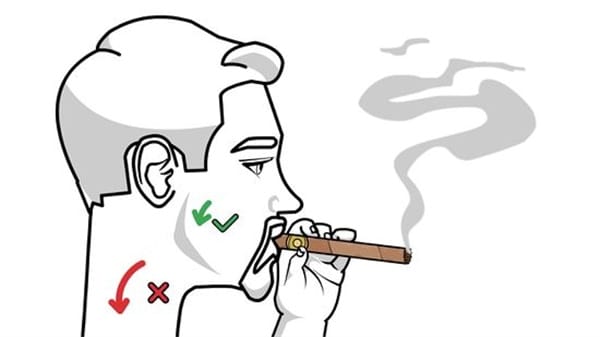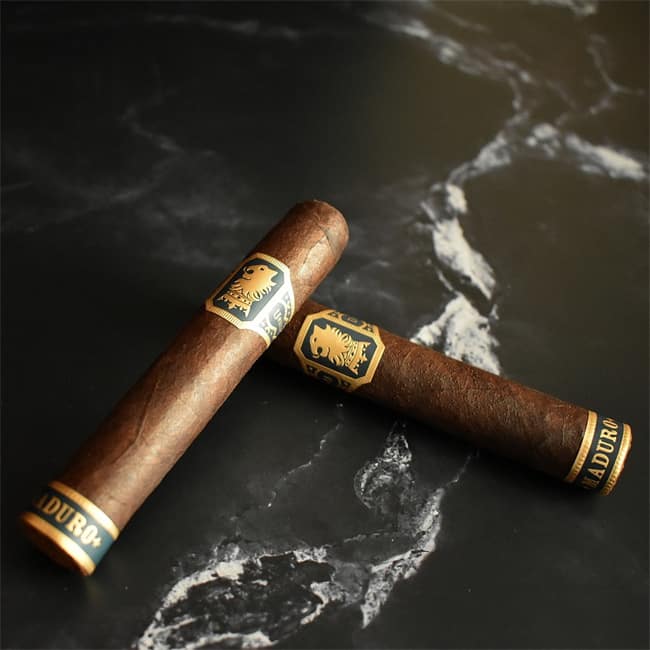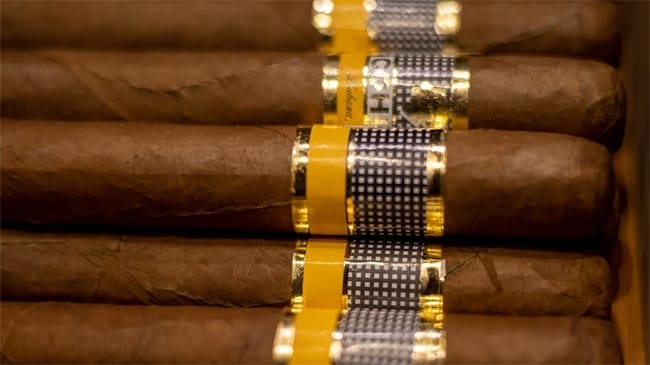How to Rehydrate Cigars: 4 Safe Methods
Maintaining the proper humidity level for cigars is crucial to preserving their quality and flavor. Dry cigars can result in harsh tastes and brittle textures, affecting the overall smoking experience. Understanding the consequences of dry cigars emphasizes the need for effective How to Rehydrate Cigars methods. By exploring safe techniques, cigar enthusiasts can revive their dried-out cigars and enjoy them to the fullest.
How to Rehydrate Cigars: 4 Safe Methods
To rehydrate your cigars effectively, it is essential to understand the various safe methods available. How to Rehydrate Cigars properly can make a significant difference in restoring their quality and flavor. Here are four safe techniques you can use:

1. Ziplock Bag and Sponge Method
Place the cigars in a sealed ziplock bag with a damp sponge.
Ensure the sponge is not in direct contact with the cigars.
Check and adjust the moisture level daily. This process can take about a week.
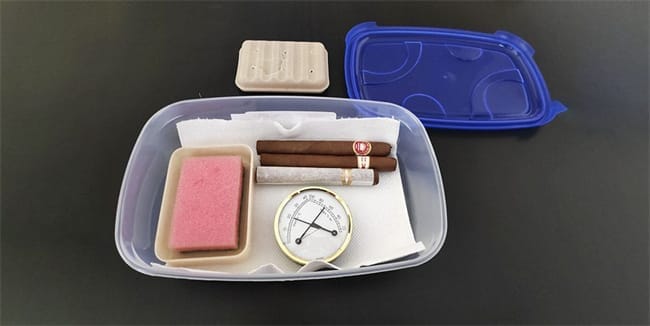
2. Humidor Rehydration
Use an electric humidor to maintain a consistent humidity level.
Start with a lower humidity setting and gradually increase it to avoid shocking the cigars.
This method provides a controlled environment for gradual rehydration.

3. Boveda Humidor Bag
Place the cigars in an airtight container with a Boveda humidor bag with 69% RH packs.
For fragile wrappers, start with a Boveda humidor bag of 65% RH packs for 4 weeks, then switch to 69% RH packs for another 4 weeks.
This method takes at least a month but prevents wrapper damage.

4. Humid places
cigars in the basement or bathroom, open the lid of the humidor, and then rotate a quarter every day; this method is very, very slow, at least a month.
Why do cigars dry out
Cigars lose moisture due to various factors that impact their environment. Understanding why cigars dry out is essential for maintaining their quality and flavor over time. Here are the primary reasons behind the loss of moisture in cigars:
- Improper Storage:
- Storing cigars in environments with low humidity levels can lead to rapid moisture evaporation, causing them to dry out quickly.
- Temperature Fluctuations:
- Exposure to fluctuating temperatures can accelerate the dehydration process in cigars, especially when moving between hot and cold environments.
- Air Circulation:
- Poor air circulation around cigars can result in uneven drying, where some parts of the cigar lose moisture faster than others, affecting their overall consistency.
- Direct Sunlight:
- Prolonged exposure to direct sunlight can cause excessive evaporation of moisture from cigars, leading to dryness and potential damage to the tobacco leaves.
- Humidor Issues:
- Inadequate sealing or maintenance of humidors can disrupt the optimal humidity levels required for storing cigars, contributing to their dehydration.
How to tell if a cigar is dry
- Look: When touched, the wrapper may break or shatter and appear brittle, discolored, or dull.
- Feel: The cigar could not have its typical springiness and instead feel rigid or papery.
- Burn: The cigar could burn unevenly, giving off a harsh, scorching smoke.
- Draw: The cigar could be hard to draw, or it might draw loose and airy.

Can you smoke a dry cigar?
Expert Testimony:
“Sometimes, despite all your efforts to care for your cigars, a mistake may occur, which leaves your cigar a little dried out. A dry cigar is something all cigar smokers will want to avoid, as it can create a bad-tasting smoke.”
“Identifying a dry cigar is the first step in the rescue process. If you’re noticing that your cigar feels unusually brittle, with a rough, cracking outer wrapper, it’s signaling for help. Additionally, a dry cigar might burn faster than usual, offering a harsh, unpleasant smoke. These are clear cries for rejuvenation, so let’s delve into the how and why of moisture’s role in cigar storage.”
Smoking a dry cigar can lead to an unsatisfactory experience characterized by harshness and uneven burning. The lack of moisture affects the overall taste and aroma of the cigar. Identifying visual cues like cracked wrappers or brittle textures can indicate that the cigar needs rehydration before smoking.
When is it no longer possible to rehydrate a cigar
It is no longer possible to rehydrate a cigar if it exhibits severe signs of damage, such as:
- Severe Cracking or Splitting: If the cigar wrapper has extensive cracks or splits, rehydration efforts are unlikely to restore its integrity.
- Loss of Essential Oils: When a cigar becomes extremely dry, it can lose its essential oils, which are crucial for its flavor and aroma. This loss is often irreversible.
- Irreversible Brittleness: If the cigar feels brittle and crumbly, it may have dried out beyond the point of recovery.
- Unpleasant Aroma: A stale or musty aroma indicates that the cigar’s quality has been compromised significantly, making it unsuitable for smoking.

How to use BOVEDA to hydrate your cigars
- 1. Place both the Medium Boveda humidor bag and the cigars in a sealed bag.
- 2. Start at 62% humidity and gradually increase it to 65% or 69% (for extremely dry cigars) to allow them to acclimatize slowly to prevent damage.
- 3. After a period of time, pinch them to see if they are still dry. If they are not, you have succeeded. If they are still dry, put them back in the sealed bag.
How long does it take to rehydrate a cigar?
Rehydrating a cigar is a gradual process that requires patience and care to ensure the best results.
It can take weeks or even months to properly rehydrate a dry cigar effectively without causing any damage.
Rushing the rehydration process may lead to undesirable outcomes such as hot smoking and a bitter taste.
Slow and controlled rehydration methods work best to avoid over-humidification, which could ruin the cigar’s quality.
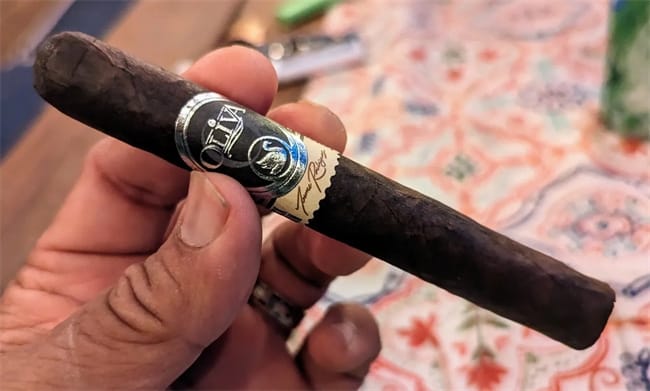
How long does it take to rehydrate a cigar with BOVEDA?
Rehydrating cigars with Large Boveda humidor bag generally takes weeks to months, depending on how dry the cigar is.
Large Boveda humidor bag is designed to provide a predetermined level of humidity, gradually releasing moisture without the need for constant monitoring. These packs offer a convenient solution for maintaining the optimal humidity levels required for cigars. Starting at 62% humidity, Boveda packs can be purchased up to 84% humidity, catering to various rehydration needs.
Why it takes so long to rehydrate a cigar with BOVEDA
- Boveda packs work efficiently by slowly reintroducing moisture into dry cigars, ensuring a gradual and controlled rehydration process.
- The gradual release of humidity prevents sudden changes that could potentially damage the cigars during rehydration.
- By taking time to restore the moisture levels properly, Boveda packs help maintain the integrity and quality of the cigars without causing any harm.

How many cigars can be rehydrated with one Boveda?
One Boveda can rehydrate approximately 15-25 cigars, with the dryness of the cigar being an important measurement. Usually, we keep the Boveda and the cigars in a sealed bag at the same time.
How to tell if a cigar has been successfully repaired
- Best method: Using a TISFA Digital Hygrometer, you can directly test the humidity level of the cigar. If it has returned to 60% to 70% RH, you can smoke the cigar with confidence.
- Visual Inspection: Examine the cigar for any signs of moisture restoration, such as a slightly glossy wrapper or a more pliable texture.
- Aroma Check: Smell the cigar to detect any subtle changes in its aroma, indicating that the rehydration process has been effective.
- Texture Test: Gently squeeze the cigar between your fingers to feel for suppleness, ensuring that it has absorbed enough moisture.
- Sound Examination: Tap the cigar lightly and listen for a hollow sound, which suggests that it may still be too dry and requires further rehydration.
FAQ
What is the fastest way to rehydrate a cigar?
The easiest and quickest way is to use an electric humidor, which has more room to run out the gaps between dry cigars for better hydration and the freedom to control the humidity level.
Can you rehydrate cigars in a humidor?
A good way to rehydrate the cigar is to put a Boveda or sponge in the humidor (the sponge must be unused and should be moistened with distilled water and squeezed out of the sponge before placing it in the humidor). Or if we use an electric cigar humidor, it is even more convenient.
How to rehydrate cigar in a humidor
In fact, placing the cigar in a properly maintained humidor with 70% humidity or using a rehydration pack can gradually restore its moisture and improve its smoking qualities. However, the extent of rehydration success depends on the severity of dryness and any damage the cigar may have sustained.
How to rehydrate cigars without a humidor
Zip-Lock Bag with Damp Sponge:
Place the dry cigars in a zip-lock bag with a damp sponge placed away from them.
Seal the bag securely and monitor the moisture level daily, adjusting as needed.
Piece of Damp Bread or Potato Slice:
Utilize a piece of damp bread or a potato slice in a sealed container with the dry cigars.
The bread or potato slice slowly releases moisture, aiding in the gentle rehydration process.
How do you rehydrate cigars in the microwave?
Expert Testimony:
The method of rehydrating cigars using a microwave involves a simple yet effective process. By following these steps carefully, cigar enthusiasts can expedite the restoration of moisture in their dry cigars.
- Begin by preparing a small container suitable for the microwave.
- Place a damp paper towel inside the container to create a humid environment.
- Carefully arrange the dry cigars on top of the damp paper towel, ensuring they are not directly exposed to water.
- Microwave the container on low power for short intervals to avoid overheating the cigars.
- Periodically check the humidity levels and rotate the cigars gently to promote even rehydration.
- Once the desired level of moisture is achieved, allow the cigars to rest before storing them appropriately.
How long does it take for cigars to dry out?
Scientific Research Findings:
- How Long Does It Take for a Cigar to Dry Out: The time it takes for a premium cigar to dry out depends on its environment. If stored in a humidor with the appropriate RH level but then abandoned, it could take several weeks. If left in the open, it could dry out in a few days.
When considering the drying process of cigars, the timeframe can vary significantly based on external conditions and storage methods.
- In an Optimal Environment:
- A well-maintained humidor with the correct relative humidity (RH) level ensures that cigars retain their moisture and flavor over an extended period.
- If such cigars are suddenly exposed to a dry environment after being properly stored, they may start drying out gradually over several weeks.
- In an Uncontrolled Setting:
- When premium cigars are left outside of suitable storage conditions, such as in open air or under direct sunlight, they can lose moisture rapidly.
- In these unfavorable circumstances, cigars might dry out within just a few days due to excessive evaporation.
How to dry out cigars
By placing it in a windy place or using a fan (not too close to the fan), the cigars will gradually lose their moisture and dry out.

